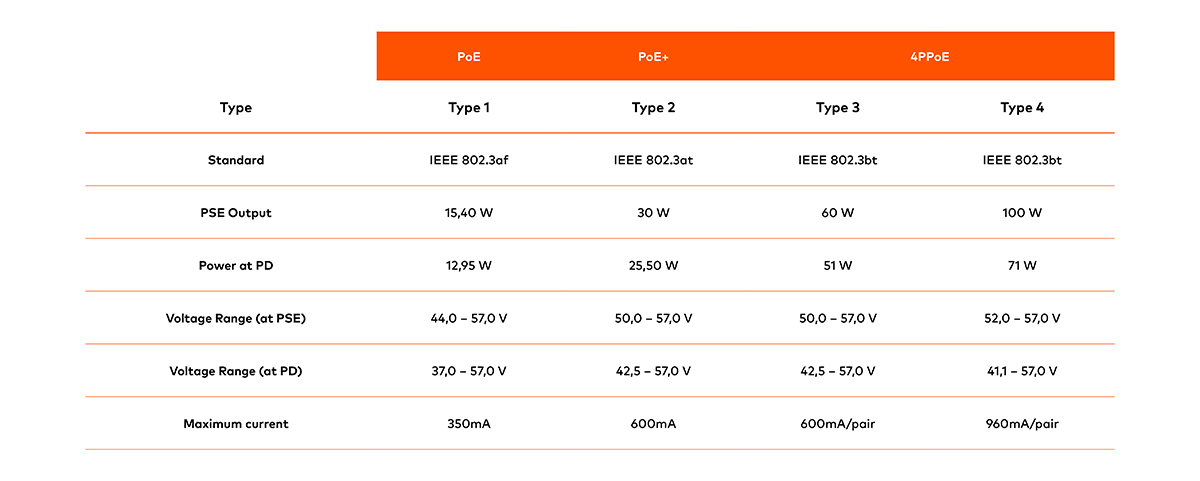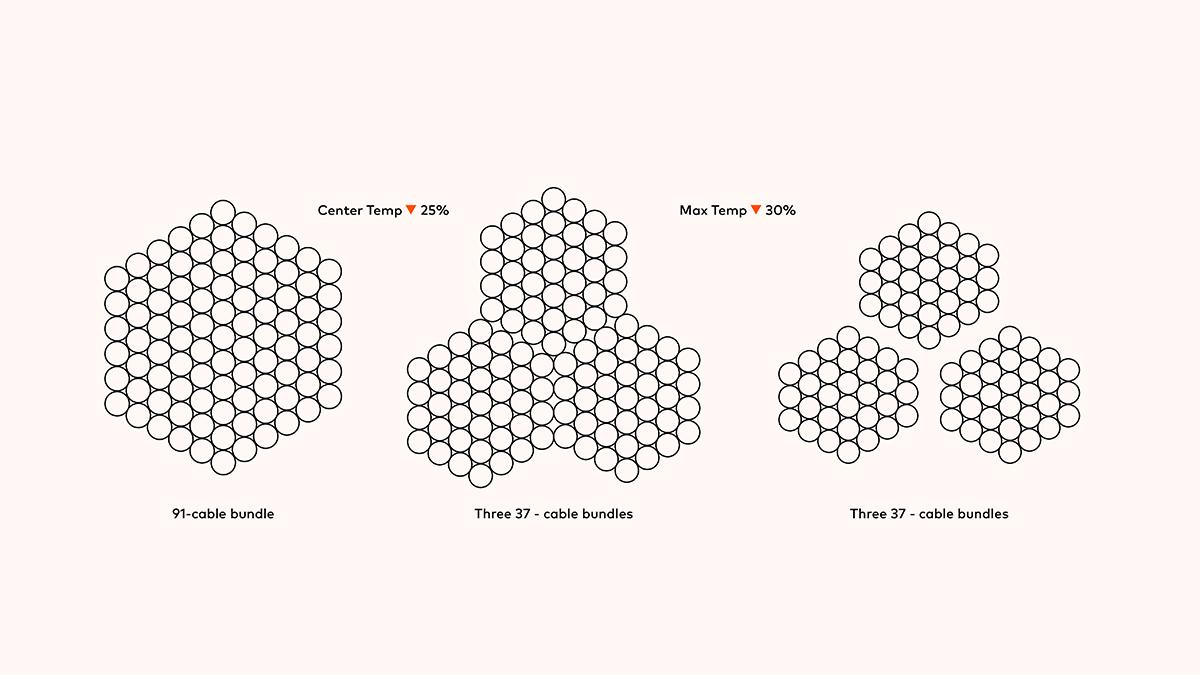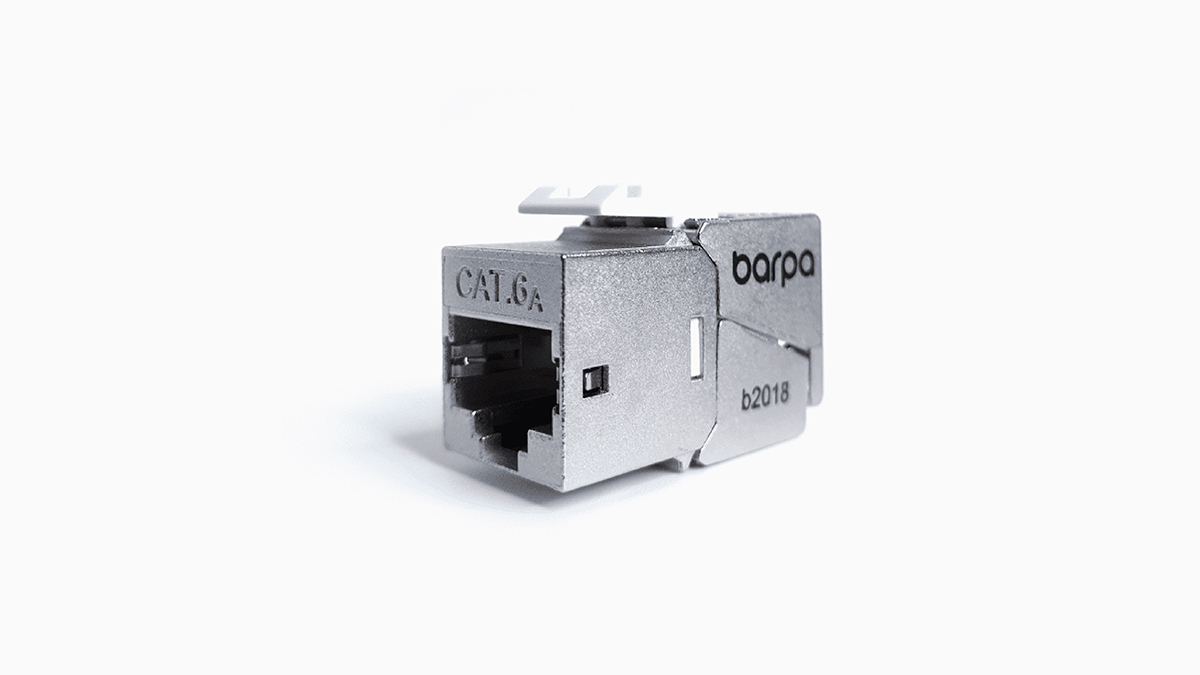How to avoid overheating using Power Over Ethernet (PoE) technology?
Introduction
PoE (Power Over Ethernet) technology allows ethernet cables to transmit data and power simultaneously using a single network cable, eliminating electrical infrastructure need, minimizing installation costs. The concept of Power Over Ethernet is necessarily related to Alexander Bell and analog telephony, since the telephone is defined as an electroacoustic device that allows the transformation of acoustic energy into electrical energy in the transmitter, and the transformation of this electrical energy into acoustic energy in the receiver; thus, it is possible to exchange information, spoken and heard, between two or more subscribers. The electrical signal was switched by an analog telephone exchange that generated a call current for an analog line, a line that used copper cable as the transmission medium.
With great acceptance by the industry, PoE standardization was necessary. Published in 2003, the IEEE 802.3af standard standardized the technique of transmitting electrical power through twisted pair cable. It provides a maximum of 15.4W per port, while supporting 10BASE-T and 100BASE-T protocols, using two of the four pairs of Cat.5 or higher cable.
With the exponential appearance of equipment supporting this functionality, such as VoIP phones or Video Surveillance Cameras, it was necessary to generate more power. In 2009 IEEE 802.3at standard (PoE+) was published promoting an increase in power capacity up to 30W per port; it supported 1000BASE-T Cat.5 or 6 protocols while maintaining the use of two of the four cable pairs.
In 2013 IEEE announced the study group for the creation of 802.3bt. Finalized in September 2018, it defined two types of PoE: Type 3 (supports up to 60W) and Type 4 (supports up to 100W). It supports 10GBASE-T, 5GBASE-T and 2.5GBASE-T protocols at Cat.5e or higher, using all four pairs of the cable to simultaneously transmit data and power.
The Telecommunications Industry Association (TIA) and the International Organization for Standardization (ISO) have updated standards that address cabling to support 4-pair PoE in accordance with 802.3bt.
PoE System Architecture
The PoE system has two types of devices: PSE (Power Sourcing Equipment), which transmits power. Can be an ethernet communication equipment (switch) with power management capability on each physical port or a PoE injector that receives data from the switch without PoE support and injects the current needed to power the device; the device that receives the power is a PD (Powered Device).
PoE Equipment Features
The increase in maximum power capacity, in terms of power (IEEE 802.3bt), leads to an increase in temperature inside the cable due to the resistance of the conductor, which can affect the performance of the connection.
Cable Construction
Conductor Size/Resistance
When selecting a cable that allows simultaneous transmission of power and data, the following aspects must be taken into account, with the premise of mitigating the temperature rise. In this sense, one of the strategies is to increase the copper section of each conductor; typically, the smaller the AWG, the larger the copper section (mm). Thermal balance is an important factor especially in high power PoE.
Variation of the number of copper pair cables for a 15° temperature increase from ambient temperature (20°) [1]
Cables per Bundle
Another way to significantly reduce the temperature is to reduce the cable bundle by choosing either to separate or to bundle them into smaller groups. The smaller the cable set and the greater the separation distance between them, the better the performance of the connection will be.
Impact of cable number reduction and separation (assuming Cat. 6A, 1000mA 4-pair cables) [1]
Cable Temperature Rating
The temperature rating of a cable indicates the temperature the isolation can sustain. Cables used for PoE have to have a temperature rating higher than 60°.
Technical characteristics Cat.6A S/FTP LSZH CU 4P AWG23 barpa cable
Armouring and connectivity
Shielded products have a greater capacity to dissipate heat through the metallic elements present in the cable’s constitution.
Cable Cat.6A S/FTP LSZH CU 4P AWG23 barpa construction
When a patch cord is removed from a working PoE connection, an electrical arc forms between the plug and the RJ45 module. While there is no immediate damage, the integrity of the connection can be weakened by numerous connections/disconnections, and can even damage the connector contacts and cause transmission problems.
In order to add protection and longevity to the connection it is necessary to use connectors that feature 50µm gold plated contacts. These must conform to the IEC 60512-9-3 and IEC 60512-99-001 standards.
Keystone Jack Cat.6A STP Toolless
Initially approved by TIA-568.2-D comes the concept of MPTL or Modular Plug Terminated Link. With the convergence of some technological areas (Wi-Fi6, IoT and Smart Buildings) the need arises to directly terminate the copper pair cable in a RJ45 male plug that connects directly to the terminal equipment. The terminal plug and patch cord are eliminated, improving the performance and reliability of the connection, ideal for solutions that require high power outputs and high bandwidth such as Video Surveillance Cameras (PTZ) or LED Lighting.
Field Term Plug the Lyra RJ45 Cat.6A STP
Conclusion
To minimize the temperature rise inside the cable and consequently improve the quality of the connections, it is necessary to consider some factors when sizing a PoE system:
– Category 6A or higher, because in addition to supporting the various types of PoE, they also operate at high data transmission rates (10GBASE-T). An example of this application is the much talked about Wi-Fi6 (802.11ax) that needs high transmission rates (10GBASE-T) and Access Points need higher power rates to operate.
– Shielded cable solutions (U/FTP or S/FTP), minimizing the increase of temperature, and these solutions should be AWG23 or 22. The use of shielded connectors ensures a greater capacity for heat dissipation due to its metallic body.
– When possible, use ventilated cable trays for better airflow. Always leaving a 50% reserve for future expansions or maintenance, always opting to distribute the cables spaced by the available volume. The number of cable ties must also be minimized to avoid deformation or crushing of the cable. Preference should be given to the use of Velcro cable ties.
barpa offers a robust cabling solution that meets the need for greater bandwidth and energy while limiting the temperature rise in the cable. It complies with all legal requirements, and looks to the future, which is constantly evolving in this area.
References
[1] – TIA-TSB-184-A, “Guidelines for Supporting Power Delivery Over Balanced Twisted-Pair Cabling”, February 2019









Sorry, the comment form is closed at this time.